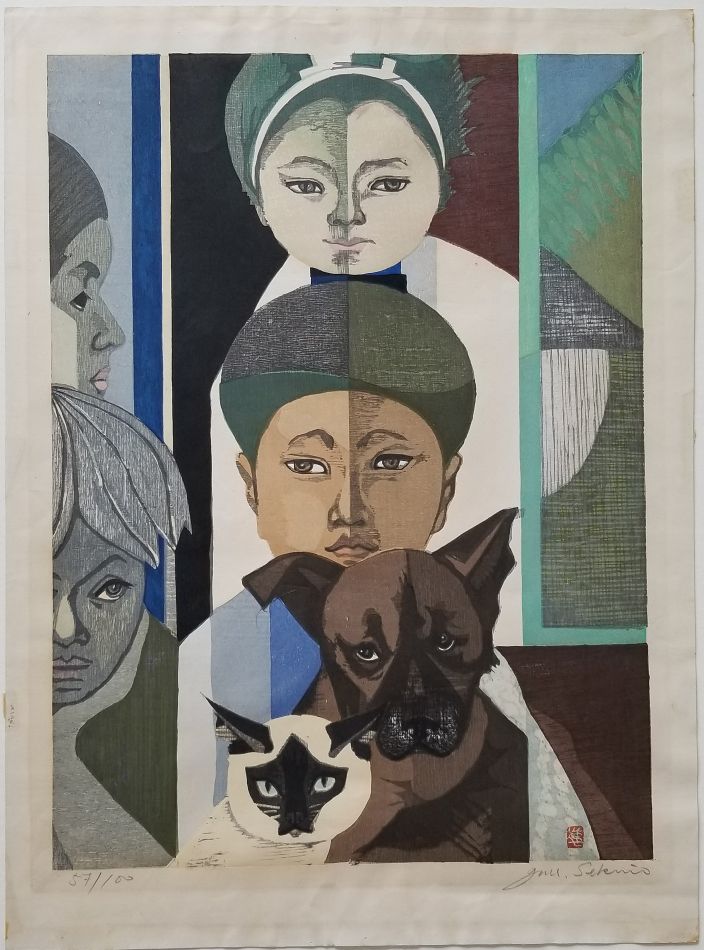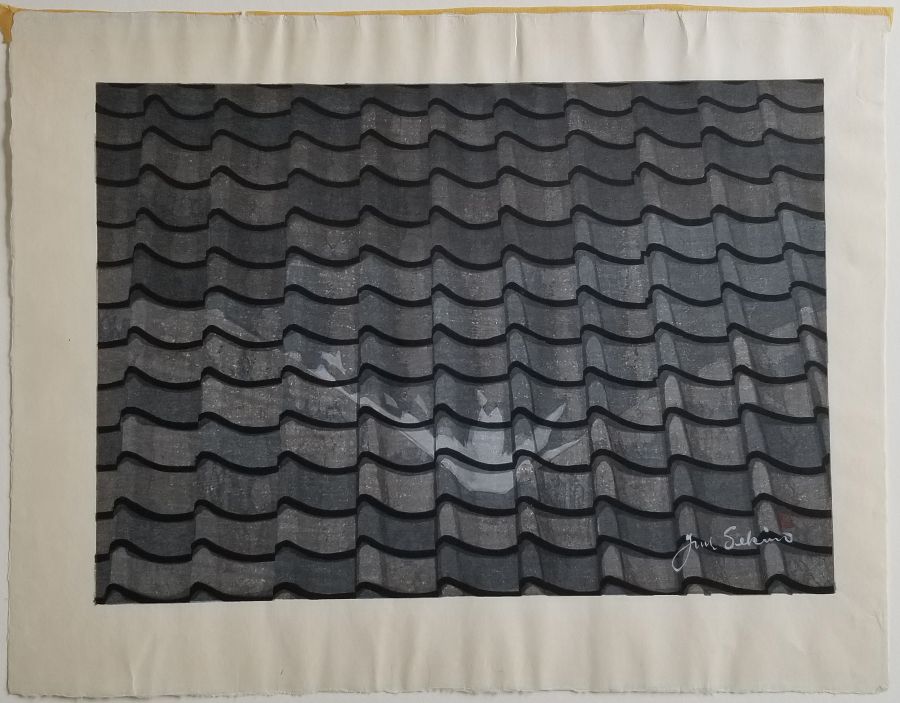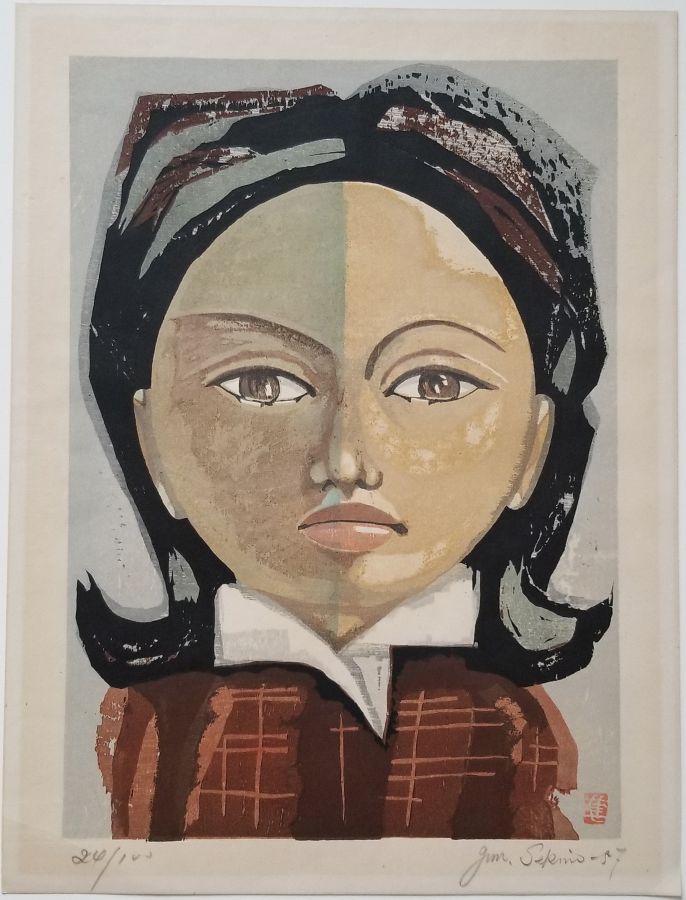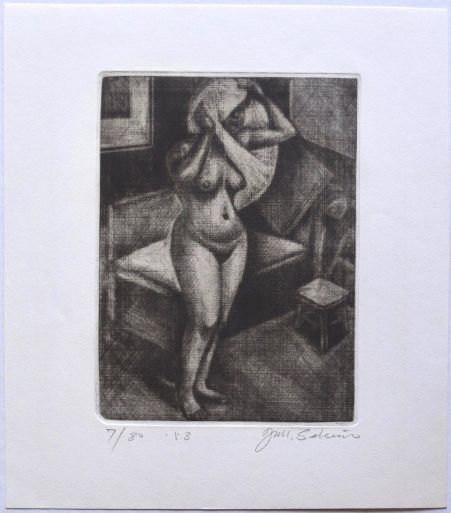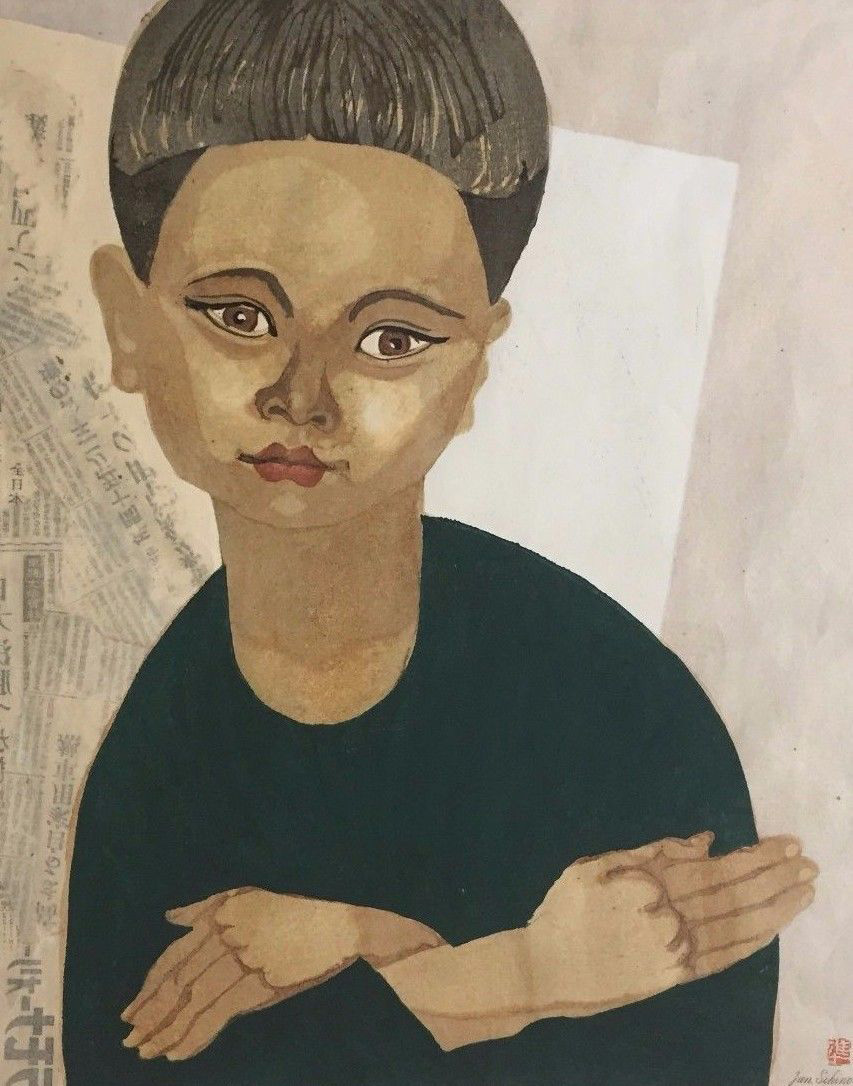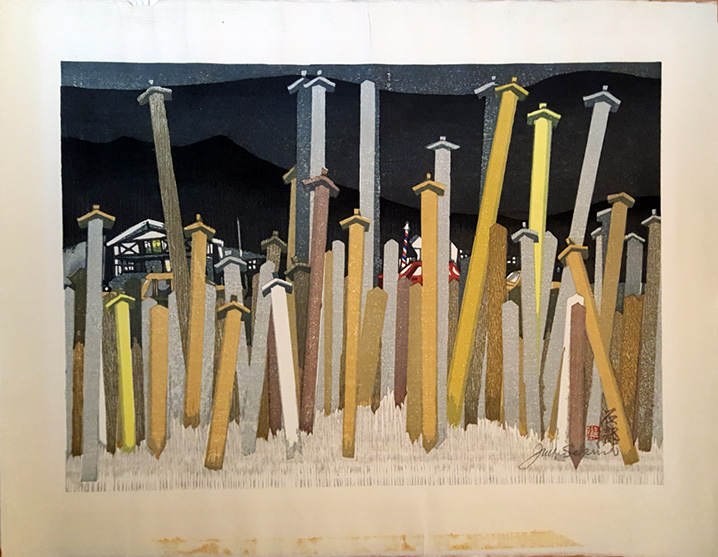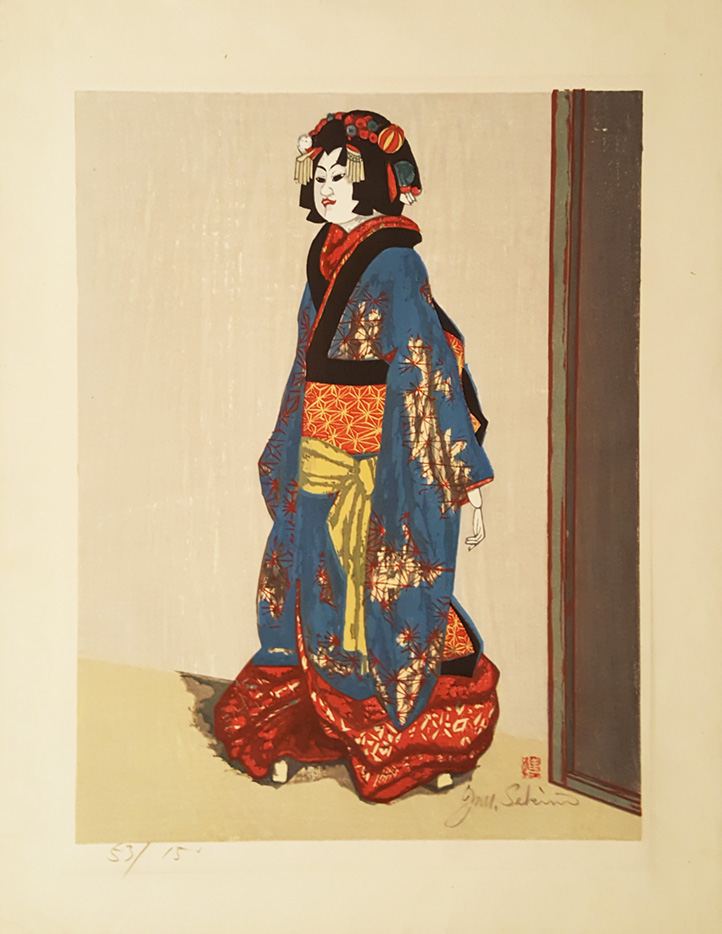Jun’ichirō Sekino (関野準一郎, Japan, 1914-1988) was a Japanese printmaker and student of the sōsaku-hanga (creative print) movement founder Kōshirō Onchi. Sekino’s versatile work depicted a range of subject matter including abstract designs, portraits of geishas, sumo wrestlers, and kabuki actors, as well as mountains and other scenes of nature. Sekino was known for his mastery of color and ability to blend Western and Eastern print styles and techniques.
Jun’ichirō Sekino was born in Aomori City, Japan in 1914. He grew up and studied alongside artist Shiko Munakata (1903-1975), later dubbed the “Japanese Picasso.” In his early formative artistic career, Sekino studied under Kōshirō Onchi (1891-1955), the founder of the sōsaku-hanga (creative print) movement. Onchi encouraged students like Sekino to create art as an act of self-expression. Sekino mastered traditional woodblock printmaking and Western-style painting and etching while at the Etching Institute of Takeo Nishida. Sekino studied and found inspiration in the work of Japanese artist Tōshūsai Sharaku (dates unknown) and Dutch Master of art Albrecht Dürer (1471-1528).
In 1932, Sekino joined the Nihon Hanga Kyokai (Japan Print Association) and the Ichimoku-kai (First Thursday Society). The same year, he showcased his print in the Chokojuto art show. Three years later in 1935, he showed his work in the Shin Hanga exhibition. In 1936, Sekino won the Teiten (Imperial Art Salon) Prize for Etching. Sekino was an active member of the Kokugakai group, which he joined in 1940. Unfortunately, the Second World War halted artistic production from 1940 to 1945. Sekino worked in an ammunition factory during this time and produced little work. After the Second World War, however, Sekino returned to producing art and held his first solo show at the Yoseido Gallery in Tokyo. Afterwards, his prints were shown at all the major Print Biennales including the Lugano, Switzerland and Ljubljana, Slovenia exhibitions.
Sekino was known for his ability to produce an incredible range of prints that varied in style and subject matter. He created figurative work such as portraits and genre scenes of geishas, kabuki theatre actors, and sumo wrestlers. His landscapes focused on scenes of mountains and waterways like streams and rivers. Sekino also produced abstract compositions and experimented with form, shape, line, and modern methods of abstracting and reducing figures and objects. He even created a series of prints showing comical and peculiar close-up studies of Japanese rooftops. Sekino was a master of color and used every possible shade of bright, subdued, and neutral colors. Utilizing his Eastern and Western education in artistic technique and style, Sekino maintained a balanced blend of traditional Japanese lithography and woodblock methods and Western-style etching techniques. Sekino also used a technique called overprinting, which produced layers of ink and texture. Sekino’s prints also display an interesting manner of depth and slight manipulation of perspective, a unique aspect that differentiates his work from other sōsaku-hanga artists.
Sekino’s series Fifty-three Stations of the Tōkaidō is considered to be his major life’s work and most well-known collection of prints. Sekino worked on the series from 1959 to 1974. He based the series on Utagawa Hiroshige’s (1797-1858) series with the same name, but rendered the series with a modern perspective. Sekino revitalized Hiroshige’s ukiyo-e style prints chronicling landscape scenes of the imperial road called the Tōkaidō, which ran from Edo (modern Tokyo) to the emperor’s palace in Kyoto. Sekino drew and carved each design himself, but received aid printing the series with three artisans: Kobayashi Sokichi, Yoneda Minoru, and Iwase Koichi. The Japanese government declared Jun’ichirō Sekino a Living National Treasure for his work on the Fifty-three Stations of Tōkaidō.
In 1958, Sekino worked as a teacher at Pratt Institute and Oregon State University, positions that were offered by the Japan-America Society. He also taught at the University of Washington for some time. The Rockefeller Foundation took interest in the artist and invited Sekino to show in New York. While abroad, Sekino traveled frequently in North and South America, as well as Europe, showing his work at several galleries and receiving numerous awards. In 1965, Sekino returned to Japan and began teaching at the Kobe University in Japan. In 1981, the Japanese government awarded Sekino the Purple Medal Ribbon of the Imperial Household Agency. Olivier Statler, author and collector of Japanese prints, included Sekino in his book Modern Japanese Prints: An Art Reborn and wrote about the artists: “As print follows print his growing success reveals an intuitive artist, increasingly the master of wood and chisel and baren, but still warm, human, and close to the heart.“
In 1988, Jun’ichirō Sekino died in Tokyo, Japan at age 74. He is considered one of the most influential Japanese woodblock print artists of the 20th century. Sekino’s work can be found in numerous collections and major museums worldwide including the Art Institute of Chicago, Museum of Modern Art (MoMA) in New York, Museum of Fine Arts in Boston, Portland Art Museum, British Museum, and the Bibliothèque Nationale in Paris, among others.







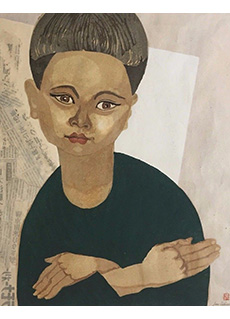
 Japan
Japan

